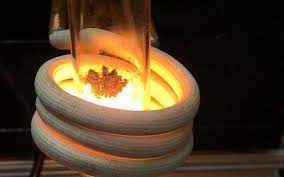China will send an unmanned spacecraft to the south pole of the moon next year with the lunar aim of bringing two kilograms of rock samples back to Earth.
The China National Space Administration (CNSA) said on September 29 it will send Chang’e-6 to the far side of the moon, which has not yet been explored by scientists. It said it will launch a satellite called Queqiao 2, or Magpie Bridge 2, to relay communications to and from the moon in early 2024.
Some commentators said that India, despite some earlier reports, cannot credibly claim to have reached the lunar south pole and that China has a chance to be a pioneer in that regard.
Last year, the CNSA said Chang’e-6’s launch would be in 2025. Early this year, it changed the timeframe to around 2024 and 2025, and now the new target is for next year.

The CNSA’s latest announcement coincided with the mid-autumn festival, which originated in Chinese mythology from Chang’e, the goddess of the moon.
It also came after Ouyang Liyuan, a top Chinese scientist, claimed Wednesday that India’s Chandrayaan-3, which landed on the moon on August 23, is actually nowhere near the lunar south pole.
“There are two things that need to be clarified about India’s moon lander. First, the description about its landing location is inaccurate. Second, people are over-optimistic about the existence of ‘water ice’ at the south pole,” Ouyang told the China Science Daily in an interview.
He said Chandrayaan-3 is at least 619 kilometers away from the moon’s south polar region, so it’s wrong to say that India has reached the south pole or is even close to it.
In 1996, an article in Science magazine suggested the possibility of ice in the bottom of a permanently shadowed crater near the moon’s south pole. The deposit was estimated to be approximately 60,000 to 120,000 cubic meters in volume.
Many nations are now looking for ice at the lunar south pole, which if found could be mined and broken down into oxygen and hydrogen, two key resources for the possible human colonization of the moon.
Last November, the US National Aeronautics and Space Administration (NASA) launched a small satellite, Lunar Flashlight, which planned to use near-infrared lasers and an onboard spectrometer to map ice in permanently shadowed regions near the lunar south pole.
But NASA said in May this year that the mission had failed because of problems with the satellite’s propulsion system.
India vs China
In April, India’s population reached 1.429 billion, surpassing China’s population of 1.426 billion and making it the world’s most populous nation, according to the United Nations. China is also facing rising competition from India due to the US strategy to diversify its manufacturing supply chain.
The budding India-China rivalry is also playing out in space. On August 23, Chandrayaan-3’s arrival made India the fourth nation to achieve a soft landing on the moon, following the Soviet Union (1966), the United States (1966) and China (2018). India claimed then that its spacecraft was the first to land near the lunar south pole.

On September 2, the Indian Space Research Organization (ISRO) shut down all of Chandrayaan-3’s instruments and put the vehicle in sleep mode. The lander was supposed to be re-awakened between September 22 and 30 if there was enough sunlight. But, as of Friday, it was still not online
The CNSA said it would send the Chang’e-6 lunar probe, which will carry payloads from France, Italy, Pakistan and the European Space Agency, to the south pole’s Aitken basin to look for ice and ancient rocks.
“Humans have so far brought back lunar samples 10 times, all of which were done on the near side of the moon,” said Wang Qiong, deputy chief designer of the Chang’e-6 mission. “Scientists believe that older soil samples can be found on the far side of the moon.”
Wang said rock samples in different ages can help scientists understand the history of the moon.
“Many countries in the world, including the US, Japan and China, are trying to explore the lunar south pole. We expect that the region will become more and more crowded,” he said.
He added that it’s suitable to have scientific research at some “peaks of eternal light,” which are covered by sunlight 70-80% of the time in a year at the moon’s south pole.
Oxygen from minerals
In any case, the mining of “water ice,” if there is any, remains a big challenge.
Ouyang’s vuew is that mining machines may not be able to work at the extremely low temperature at the moon’s south pole. He posited that lunar minerals, instead of water ice, are more promising feedstock for oxygen production.
“People can bring some water to the moon to create oxygen and hydrogen through electrolysis. Hydrogen can be used to create water through the reduction of ilmenite (titanium-iron oxide mineral),” Ouyang said. “The recycling of these resources can create a continuous supply of oxygen.”

Some scientists have found that the lunar samples brought to Earth by the Apollo spacecraft in 1969-72, contained ilmenite, 8-10% of which is oxygen. Maximum yields of oxygen from these rocks can reach 2-2.5%.
An Israeli company known as Helios has developed a an oxygen factory prototype and plans to send it to the moon in 2025, aiming to produce a few dozen grams of oxygen to show proof of concept.
Meanwhile, four astronauts are to perform a flyby of the moon and return to Earth in November 2024 as part of NASA’s Artemis 2 mission. Two astronauts will land on the moon’s south polar region and stay there for about a week in December 2025 in the Artemis 3 mission.
Read: New blast plan for China’s 2030 manned moonshot
Follow Jeff Pao on Twitter at @jeffpao3

